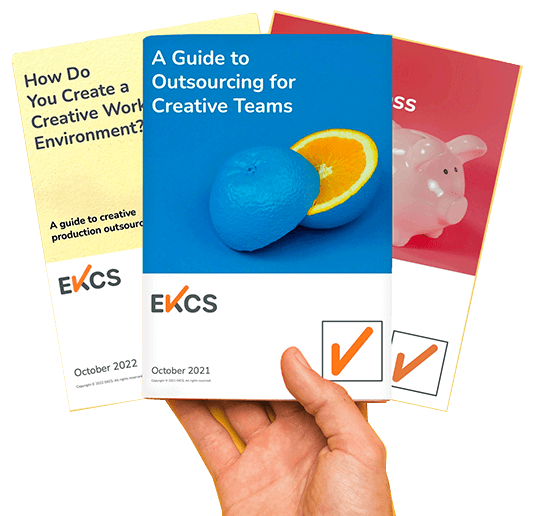
Table of Contents
Share this blog
Should You Be Outsourcing Creative Production in 2023?
Outsourcing has come a long way since the early days when typically IT work was undertaken offshore and call centers were set up. Nowadays, technology enables better communication and enhanced collaboration which wasn’t available in the early days of offshoring.
From giants like Microsoft, Google, and IBM to early-stage startups…everyone’s involved in offshore outsourcing.
Thomas Friedman’s best-selling book The World Is Flat: A Brief History of the Twenty-first Century showed that digital outsourcing came of age in the confluence of cheap global infrastructure and Y2K. Twenty-plus years on and the level of sophistication, creativity, and interaction possible is much higher than it was.
Creative Production Outsourcing
It’s likely a number of your closest competitors are outsourcing their creative production, although you might not be aware of it. According to the ‘State of the Market for Offshore Creative Production' report by TKM Consultants, 53% of agencies had partners in India last year. India is one of the largest outsourcing markets in the world. The time zone is a distinct advantage and many offshore partners work 24/7, as is the huge graduate and English-speaking talent pool. After the US, India is the second-largest English-speaking country in the world.
Outsourcing and cost savings
The cost issue looms large now, as Marketing Directors and CMOs are under pressure to prove the ROI on their campaigns and projects, something that hiring additional freelancers or extra staff makes difficult to achieve. The Covid-19 pandemic has significantly impacted the creative services industry with over half of marketers experiencing a decrease in their marketing budget according to marketingweek.com. Doing ‘more for less’ is now commonplace.
For many years, access to a lower-cost resource was the primary motivator for offshoring. An article published by Campaign Live highlighted how Nestlé was able to reduce production costs by as much as 80% using offshore production partners. For creative and artwork, production, and digital work, using an offshore production partner can make significant savings for in-house agencies without any loss in quality.
More time to be creative
Besides significant cost savings, it’s important to realize that there is a range of additional business challenges that are motivations for in-house studios to start their offshore search. In a survey conducted by EKCS, over half of IHAs said it was difficult to find time for creative work. The benefits of modern production outsourcing include:
- being able to meet tight deadlines for campaigns
- accessing a wider talent pool
- creating cross-media adaptations quickly.
The Bangalore call centers that Thomas Friedman visited in 2005 may have been the pioneers of early outsourcing, however the offshore market, and those that serve it, have come a long way since the early days of outsourcing.
As satisfaction levels are steady and partnerships are developing based on trust, the offshore production service is set for strong growth over the next five years. In fact, brands and IHAs are predicting more investment in offshore creative production over the next 12 months. If you’re not outsourcing creative production, isn’t it time you invested in outsourcing?

To find out more about outsourcing and explore how it can help your team to solve production challenges
Download our FREE GUIDES. They look at the benefits of creative production outsourcing, what to consider in a production partner, and tips on how to get started with outsourcing.
Similar Blogs

The Importance of “Universal Levels of Creativity” in Production

How to create a creative work environment

Can creative production outsourcing help with creativity?
Subscribe to our Newsletter
Let's stay in touch! so that we reach out to you with our best news and other insightful content.
